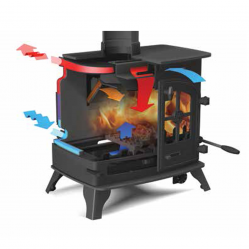Stoves > Boiler Stoves

Boiler Stoves
Perhaps one of the most underestimated heating solutions is that of the boiler stove or ‘back boiler’ as it is also known. You may not have heard the term before or have no idea what a boiler stove is. Don’t worry, not many people have heard of them or indeed use them, particularly in cities and urban areas where gas central heating is readily available and easy to use. But boiler stoves are a great addition to any home where owners want to significantly reduce heating bills and their carbon footprint.
So, what is a boiler stove? They are essentially stoves, either wood or multifuel, with boilers attached or built in to heat up water through the combustion process. It can be used as a hot water source and/or heating source, attaching to existing radiators and hot water systems, with the capacity to heat up to 19 radiators!
Boiler stoves of the past tended to be ugly and cumbersome units, with large unsightly boilers attached which kicked out little heat for maximum effort. Nowadays they have had a significant upgrade in the design and efficiency, with many models incorporating the boiler with the burn chamber, meaning you get more hot water and heat for minimum effort. With this being said, it is essential to get the right sized boiler stove for your home, as more energy will be expended heating up the water, resulting in reduced output into the room.
Pop into one of our many showrooms or give us a ring to discuss boiler stove options. We stock some of the best boiler stoves on the market, from small low-output boiler stoves to heat small areas, to the biggest boiler stoves around, able to heat whole houses; even inset boiler stoves which are perfect for areas where space is limited.
